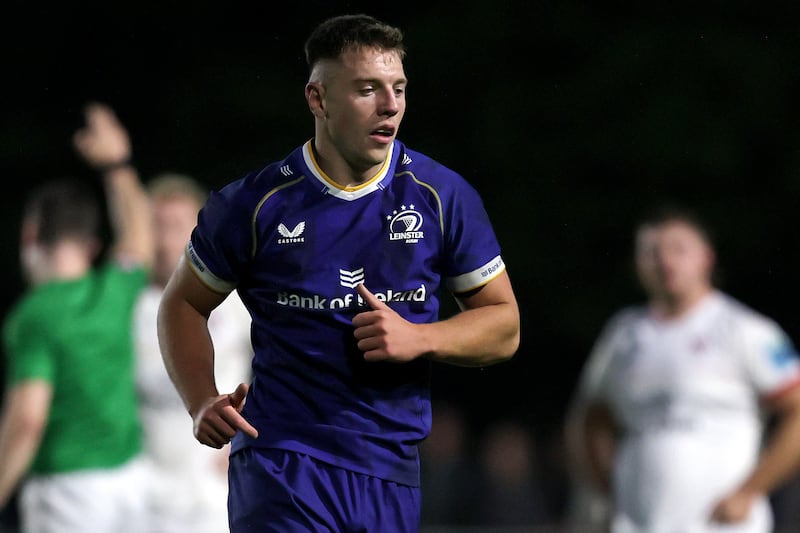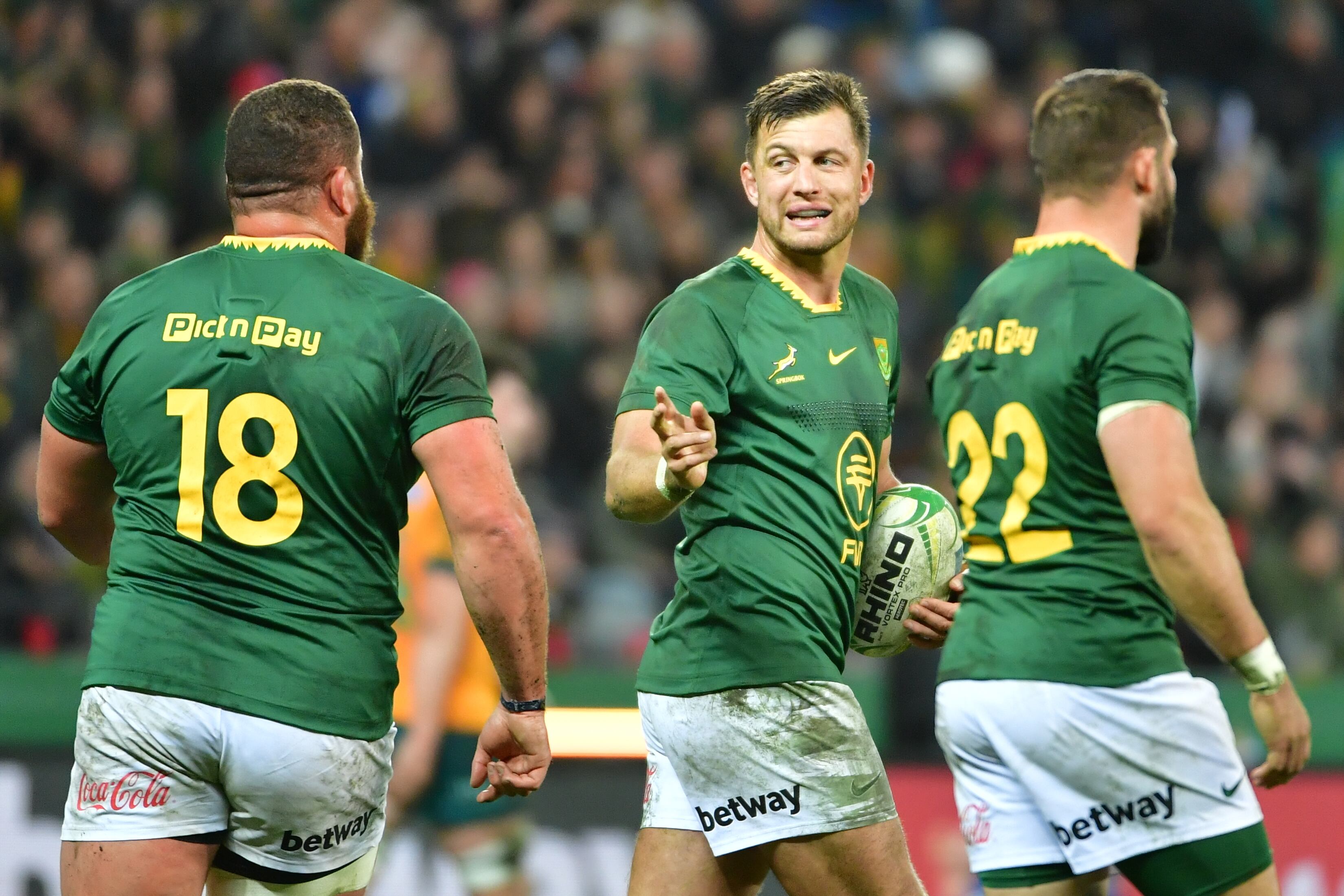Last Saturday’s dramatic victory over the Springboks left Irish rugby on a high heading into the summer break. Regardless, the first Test defeat and the way in which South Africa built a second Test lead suggest there are a number of questions facing Ireland for next season.
Injuries to key players such as Dan Sheehan and the ageing profile of players in several positions mean next season should see some new faces. How do Ireland plug their personnel gaps? After suffering two losses so far this calendar year, how can they evolve to remain one of the world’s best teams? What, if anything, needs to change?
Do Ireland need to break their attacking mould?
Last Saturday proved once again that Ireland are more likely to have success when they have more of the ball. Such is the threat of their intricate multiphase attack, the longer a defence faces it, the higher the probability of finding a crack.
In the first Test of the South Africa tour, Ireland made 112 carries. In the second Test, which Ireland won, this only increased to 117. Yet Ireland’s overall possession increased from 48 to 53 per cent, while South Africa’s carry total dropped sharply from 116 to 91. Ireland saw more of the ball than the opposition and did plenty more with it, making eight line breaks last weekend compared with just four the week before.
READ MORE
By comparison, when England beat Ireland in the Six Nations, they limited Ireland’s attack to just 93 carries and two line breaks. England and South Africa both displayed new, possession-hungry attacks. Teams are starting to figure out that the best way to beat Ireland is simply to keep the ball away from them.
That said, Ireland still needed an audacious grubber from Ciarán Frawley and two drop-goals to win the second Test. Jack Crowley’s tactical kicking game was also prominent. Moments when Ireland risked kicking possession away, instead of holding on to it, defined the outcome, rather than long attacks that built multiple phases.
Rugby embraces copycat culture. If the tactic brings more success, other teams will inevitably try to keep Ireland away from the ball. In response, do Ireland need to take more risks, of the kind displayed by Frawley, in order to maximise their dwindling possession? Will the attack become less focused on volume, more on striking quickly?
Ireland will soon have a new backs coach in Andrew Goodman, who worked with the departing Mike Catt on this tour. How he interacts with Andy Farrell as Ireland’s attack evolves will be fascinating.
How to plug the Dan Sheehan gap?
Rónan Kelleher will replace Sheehan as the starting hooker. Ireland are fortunate with their depth in that regard. But if Ireland want a similar type of player as their bench hooker with Sheehan sidelined by a suspected ACL injury, who will that be?
One potential answer comes from looking at who best mimics Sheehan’s speed and power. According to Opta, Sheehan led the way for Irish hookers this year in dominant carry percentage (46) and dominant tackle rate (12 per cent). Kelleher wasn’t a million miles away on either count (39 and 11.6 respectively).
In raw data terms, there isn’t a huge drop-off thereafter. But these figures are from domestic games which can be skewed by weak teams of the sort not found at international level. The eye test – featuring moments such as Kelleher thundering into Kwagga Smith – needs to be applied.
Still, armed with those caveats, who, according to the stats, is the next most dynamic hooker in Irish rugby? Not Dave Heffernan, who was called out to South Africa as Sheehan’s replacement. Not Tom Stewart, who has also been capped. The answer is another Leinsterman: Lee Barron.

Barron was dominant with 44 per cent of his carries this season (behind only Sheehan), and in 11.5 per cent of his tackles (a hair behind Kelleher). His attacking breakdown efficiency of 93 per cent ranks first among Irish hookers, while his defensive equivalent figure (17 per cent) places him second, behind only Ulster’s Stewart. Granted, sample size warnings need to be applied given Barron played only 400 minutes this year, less than half of Stewart’s total of 857. Unlike Barron, Stewart also featured in Europe against better opposition.
More generally, experience suggests Rob Herring is in pole position to take the bench hooker spot. Still, with more provincial game time on his way because of this injury, it will be interesting to see if Barron continues to trend upwards in areas where Ireland will suffer without Sheehan.
Where are the props?
Another day, another conversation about frontrow depth. Memories of South Africa’s first Test penalty try against Ireland’s replacement props continue to haunt. In Durban, Ireland’s frontliners struggled to a paltry 56 per cent scrum success rate.
While South Africa are the best scrummaging side in the world, that doesn’t change the fact that Cian Healy, Ireland’s second-choice loose head, is 36. That side of the scrum is where the depth issues largely lie, given tight heads Tadhg Furlong (31), Finlay Bealham (32) and Oli Jager (29) all have a number of years of rugby left in them.
Tom O’Toole, a tight head until very recently, was Ireland’s third-choice loose head on this tour. That says plenty for how options outside the squad are rated. There is a reason, after all, that David Humphreys has banned the provinces from signing non-Irish qualified props; development is needed, and soon.
Who is closest to the squad? It depends what Ireland are looking for. Given it is an area of weakness against certain sides, good scrummagers would be desirable. O’Toole wasn’t famed for his scrummaging on the tight head side but it is, relatively speaking, an easier task to pack down at loose head. Sadly, public data on scrummaging ability is limited.
What we can instead assess is dynamism around the park, the sort that saw Andrew Porter first break on to the scene. Of a number of loose heads who saw provincial game time this season, Leinster’s Jack Boyle was comfortably the strongest carrier with a 48 per cent dominant rate. The next best was Michael Milne with 39 per cent. Boyle, though, is only 21. Milne did tour with Emerging Ireland in 2022.
If Ireland want a defensive workhorse instead, newly minted loose head O’Toole had the highest tackle success rate among any player who attempted more than 100 tackles in this year’s URC (98 per cent). He has been the league’s most consistent defender on three separate occasions now. More often than not, the man doesn’t miss.
Does all that matter if these loose heads can’t hold up an international scrum? Time will tell.
Who takes the six jersey?
Was the decision to drop Peter O’Mahony to the bench for the Durban Test a signal of a changing of the guard? Will the young pretenders force the Ireland captain out of his six jersey?
Again, the answer depends on what Farrell wants from the position. If looking for more physical impact around the park, the data-based answer is yes. Who, then, will be the next man up?
Taking carry, tackling and ruck stats on both side of the ball, Ryan Baird is the most rounded, impactful six. Of a group including himself, Cormac Izuchukwu, Tom Ahern, Tadhg Beirne and O’Mahony, Baird ranks second for dominant carry rate (41 per cent), first for dominant tackles (11 per cent), third for attacking ruck efficiency (91 per cent) and first for disrupting defensive rucks (19 per cent).
After Baird, no one displayed as well-rounded a game in this year’s provincial action. Ulster’s Izuchukwu has been a revelation since Richie Murphy started playing him at six and he is the most dominant carrier of the group (47 per cent). Since he shifted to the backrow, he also averages the most metres made (86) per 80 minutes of any URC forward. However, his dominant tackle rate lags behind Baird (6 per cent) while his ruck efficiency on both sides of the ball doesn’t stand out.
Ahern was another good carrier and defensive breakdown operator before his injury earlier this year, but his dominant tackle rate is low compared with Baird. Beirne, the man in possession of the six jersey after last weekend, didn’t pack too much power in carrying or tackling, but his breakdown work on both sides of the ball is among the best of this group. His inclusion at six also allowed James Ryan and his four dominant tackles to feature at secondrow.
Of course, intangibles that aren’t factored into this data – such as lineout skills – need to be considered. Leadership is another factor. Given Farrell’s appreciation for all facets of the game, O’Mahony and Beirne – if not playing at lock – will always be close to selection.
The battle to push them will be waged between the more dynamic athletes Baird, Ahern and Izuchukwu. It remains to be seen if there will be a permanent takeover at some point next season.
- Sign up for push alerts and have the best news, analysis and comment delivered directly to your phone
- Join The Irish Times on WhatsApp and stay up to date
- Listen to our Inside Politics podcast for the best political chat and analysis
















